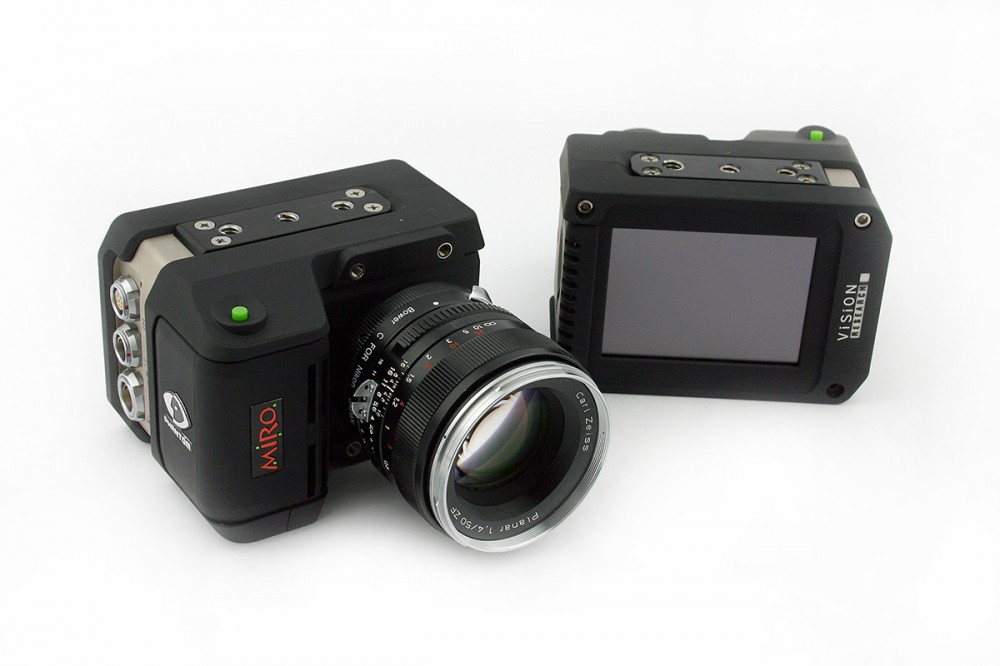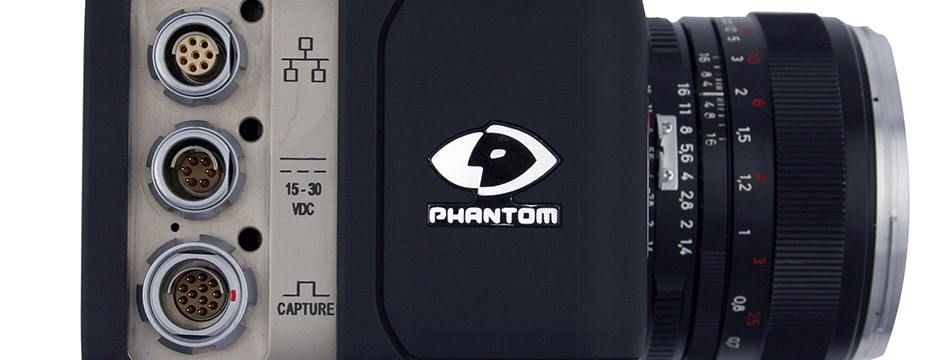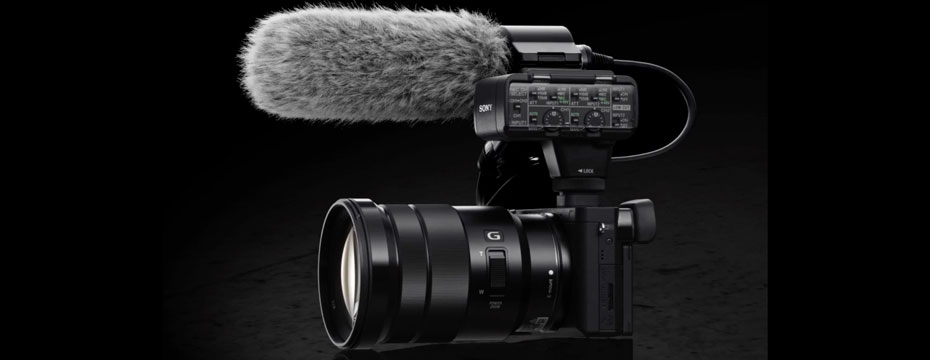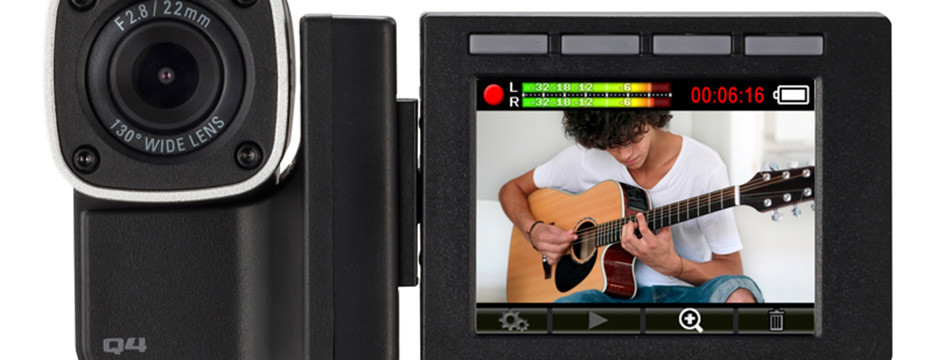ANTIMEDIA – PHANTOM MIRO SHOWREEL from ANTIMEDIA on Vimeo.
How do you avoid annoying AutoFocus? Mount a manual focus lens. How do you get slow motion? Insanely fast frame rates with a Phantom Miro. in this case, 1,200 frames per second, then you slow it down to a “normal” thirty frames per second rate when you play it back. Simple, right? In concept yes, but in execution it can be a very difficult undertaking, and hence my story about why the Phantom Miro is such a remarkable little camera.

The Phantom Miro – High Speed Camera System – A Remarkable Little Camera
Extreme slow motion requires special high speed digital cameras. Few cameras made can do image capture at 1,200 frames per second. The fastest DSLR’s made can only achieve twelve to fourteen frames per second. AntiMedia has chosen the Phantom Miro as one of their tools for use in the frozen north lands. Wise choice, from the look of it the Miro must be capable of functioning well in extreme climate and conditions. In extreme cold it would be difficult at best, impossible at worst, to achieve maximum performance with a mechanical shutter. The Miro employs an all electronic shutter to get the job done.
Least anyone be concerned about the weather and dust sealing of the Phantom Miro, you can rest easy. The Phantom Miro held up far better recording the video below than did the paint on the new Camaro. The wisdom in sand blasting the car exterior for the sake of a slow motion YouTube video is another question, to be answered another time, but it does make for a dramatic finish to my story ;=)
Phantom Miro eX4 @ 1245 fps + 2011 Camaro SS from Chad Westover on Vimeo.
Of course, all of this high speed comes at an equally high cost. The Phantom Miro starts at $75,000 and goes up from there as you equip it. Fortunately, the Phantom Miro makes a perfect rental item. Look for it to cost around $1,500 per day – $4,500 per five day week in major rental locations here in Hollywood.
The specs on the Phantom Miro from Vision Research
| Short Description |
- With 800 x 600 pixels and variable control to 1000 fps. LCD display, battery power, CompactFlash storage, EDR, and powerful external controls
|
| Throughput/Speed |
- Max speed at full resolution of 800 x 600 is 1260 fps to RAM
- Max speed at reduced resolution of 32 x 16 is 111,100 fps to RAM
|
| Sensor Specifications |
- CMOS sensor
- 800 x 600 Pixels
- 22 µm pixel size
- 12-bit depth
- Active sensor dimensions are 17.6 mm x 13.2 mm
- ISO is 4800 mono, 1200 color
- CAR in 32 x 8 pixel increments
- Fill factor: 65%
- Dynamic range: 60 dB
- Read out noise at 45°C (typical): 21e-
- Full well capacity (typical): 22000e-
|
| Exposure |
- Minimum exposure time is 2 µs
- Global electronic shutter
|
| Memory |
- 2 GB or 4 GB high-speed internal RAM
- Removable CompactFlash™
|
| Record Times |
- 1.86 seconds at maximum frame rate, maximum bit depth, largest resolution and into maximum internal memory
|
| Special Features |
- Segment memory for up to 4 cines
- Continuous recording
- Frame rate profile
- Memory gate
- Frame timestamp
- IRIG in/out (modulated and unmodulated)
- LCD touch screen monitor / user interface (640 x 480 with 800 x 600 zoom) 3.5 in
- Secondary IP address
- Field-based firmware upgrade capable
- EDR
- Auto Exposure
|
| Triggering |
- Programmable trigger location (pre/post trigger recording)
- Image-Based Auto-Trigger standard
- On-camera trigger button
- LCD touch screen button
- Hardware trigger
|
| Timing & Synchronization |
- Frame synchronization to internal or external clock (FSYNC)
- IRIG in/out (modulated or unmodulated)
- Ready output
- Strobe output
|
| Signaling |
- Aux (IRIG-out or Strobe)
- IRIG-in
- Ready
- F-Sync
- NTSC & PAL video
|
| Ethernet Connection |
- 10/100 Ethernet for both control and data
|
| Camera Control |
- Phantom Camera
- Control software (PCC)
- SDK available
|
| Video Out |
|
| Lensing |
- 1″ C-mount, C- to F-mount adapter for using F-mount lenses is included
|
| Video Processing |
- Brightness
- Gain
- Gamma
- Saturation
- Hue
- White Balance
- Color interpolation algorith
- Filters
- Color matrix
- Image flip and rotate
- Crop
- Scale
|
| Data Acquisition |
- National Instruments M- and X-Series DAQ modules with integrated support in PCC
|
| Motion Analysis |
- Basic measurements via Phantom Application:
- Distance
- Speed
- Acceleration
- Angles and Angular Speed
- Manual and Automatic point collection for target tracking
- Compatible with 3rd party solutions
|
| Supported File Formats |
- Cine, Cine Compressed, Cine RAW, AVI, h.264 mp4, Apple ProRes .mov, Multipage TIFF, MXF PAL, MXF NTSC, Uncompressed QuickTime, Windows BMP, OS/2 BMP, PCX, TGA, TIFF, LEAD, JPEG, JTIF, RAW, DNG, DPX
|
| Power |
- 15-28 VDC, 12W
- Battery removable, replaceable Li-Ion, 7.4V, BP-511
|
| Mechanical Specifications |
- 3 x 3.75 x 3 in (L, W, H)
- 7 x 9.5 x 7 cm (L, W, H)
- Weight: 1.5 lbs, 0.7 kg
|
| Environmental Specifications |
- Active cooling with dual internal micro-fans;
- Operating temperature 0°C – 50°C
- Storage temperature -20°C – 70°C
|
| APIs |
- Phantom SDK
- LabView
- MatLab
|
| Ships Standard With |
- Power supply
- Ethernet cable
- PCC software
- Getting Started guide
- Image-Based Auto-Trigger
- C- to F-mount adapter
|
| Options |
|
| Popular Accessories |
|










